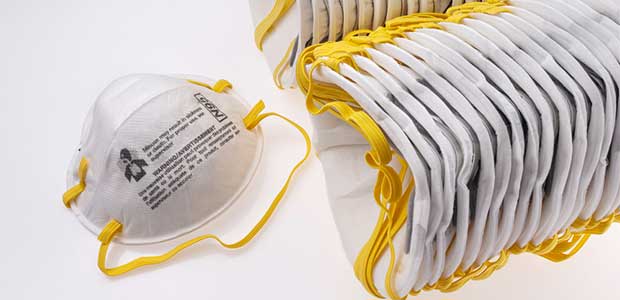
Making the Right Choice Part 2: How to Avoid Misrepresented or Counterfeit NIOSH-Approved Respirators
Look for these signs to tell if the respirators you have or are considering purchasing are NIOSH-approved.
- By Alex Saurman
- Feb 01, 2023
Late last year, we detailed the National Institute of Occupational Safety and Health’s (NIOSH) guides on what to look for from sellers when purchasing respirators. Now, we’ll look at the products themselves.
But before we jump into that, it’s important to define the two words this article focuses on. Misrepresented refers to “respirators that are falsely marketed and sold as NIOSH Approved respirators when they are not,” NIOSH said. Counterfeit is used to “refer to products trying to copy an actual NIOSH Approved model.”
So, to ensure that you’re not purchasing or using misrepresented or counterfeit NIOSH-approved respirators, the first thing you can do is look at NIOSH’s certified equipment list (CEL). Users can use a generic or detailed search to find if the respirator they use or want to buy is certified by NIOSH. (Private-label products may be on another list.)
For filtering facepiece respirators (FFRs), look closely at the exterior print on the respirator. There should be a few lines of text and numbers you’ll want to examine, most of which are required for a NIOSH-approved FFR. Check the approval holder marking, or the company or private label’s logo or name. You can also look for the model or part number as well as the type of protection, which, according to NIOSH, includes N95, P95, R95, N99, P99, R99, N100, P100 or R100.
Check for the TC approval number, which starts with “TC,” and the letters “NIOSH,” which will be capitalized. The lot number may also be displayed. If it’s not, don’t worry; this isn’t required. Private-label products have additional requirements.
Don’t see any markings, or is the respirator missing the required ones? This may be a sign that it’s counterfeit. Other signs include, per NIOSH:
- “Presence of decorative fabric or other decorative add-ons (e.g., sequins)
- Claims approval for children (NIOSH does not approve any type of respiratory protective device for children at this time)
- Filtering facepiece respirator has ear loops instead of headbands. At this time, NIOSH has not approved respirators that use ear loops without the use of an approved fastener. The fastener connects the loops behind the head.”
Finally, NIOSH also provides a list of examples of items that are not NIOSH-approved. To view the list, see counterfeit or misrepresented respirator examples.
About the Author
Alex Saurman is a former Content Editor for Occupational Health & Safety,who has since joined OH&S’s client services team. She continues to work closely with OH&S’s editorial team and contributes to the magazine.